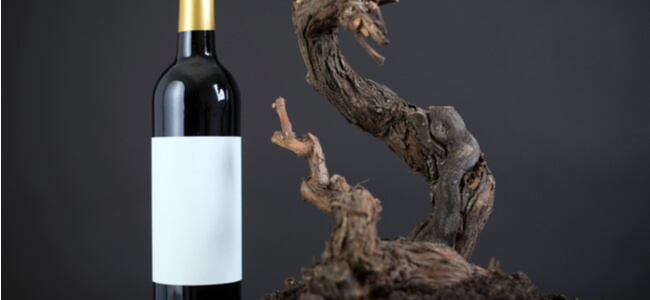Old vines are obviously a ‘new thing’. Maybe you’ve spotted a label that claims to be ‘old vine’ or maybe you had the opportunity to savor a glass of wine produced from an older grapevine. However, there’s more to this term than just hype.
What Grape Age Makes A Good Wine?
When does a grape (even one that grows on an old vine) become eligible for harvesting and wine production? What are the factors involved in determining this?
- About three years after a vine is planted, it’ll produce fruit
- At around seven or eight years, the plant will reach adulthood
- A mature grapevine can be anything from 12-25, whereas old vines are over 25 years of age and in some rare cases even more than 50
In Maribor, Slovenia, a rare red variety called Žametovka grows on a grapevine that’s 400 years old, making it the oldest vine according to the Guinness Book of World Records.
What Makes An Aging Vine So Special?
The life cycle of a grapevine is interesting because of how they age and the traits that present themselves as time goes by. These characteristics are by no means applicable to all old vines, but most include the following:
- Old vines usually produce fruit that’s more concentrated. This is partly because they lose productivity with age. In return, the fruit’s deeper concentration yields more concentrated vino
- The roots of these vines work really hard to source nutrients and water from far below their surface. Because of this, older vines aren’t exposed to a larger vintage variation and tend to be more resistant to droughts and floods
- Unripe tannins in grapes can result in a green, astringent taste. With older vines, there’s a more consistent physiological ripeness that’s achieved
- The older a vine grows, the less futzing they need (if the vines are in tip-top shape)
- Reduced production is a key factor that makes older vine varietals a rarity. However, less production means less money for a grape grower or winemaker
- Older vines are rarely on-trend in the vino scene and that’s partly because they’re grown with varieties that aren’t considered in vogue. These include petite Sirah, carignan, zinfandel, and trousseau. Moreover, growers can’t charge a high price for their grapes. However, there are instances where winemakers might hike the price because of rarity and quality.
Regions With Aged Vineyards
Even if these old vine varietals are considered hard to come by, you’ll be surprised to know that there are regions that are known for their elderly grapevines. These gems have remained in the one place where growers didn’t restructure their lands with varieties that sell better on the market.
Let’s see where these places are so you can plan an old vino expedition.
Languedoc, Southern France
The 1970s was a time when Languedoc was baptized as “the wine lake.†This was because it was overflowing in its production of the Carignan grape. This became a bit of an issue since there was too much vino that was leftover. Imagine that…
These varietals actually ended up as supplements in the distillation process for fuel. Farmers were paid to pull out their vines. Although, there were a few who stood strong and kept their production steady until now.
Santorini, Greece
Red wines aren’t the only type of vino that enjoyed the benefits of growing in mature vineyards. Santorini island is proof that the rare variety assyrtiko grew to be a spectacular breed thanks to its unique growing method of wreath-shaped vines. The higher-quality grapes are used to produce a rare oaked version of assyrtiko called nykteri, which is very similar to white burgundy.
Lodi, California
Many tourists flock to Napa Valley when, in fact, Lodi is the place they need to visit. This region has 100,000 acres of vineyards. It was also the epicenter of grape production back in the late 1800s. Stop by to try out mesmerizing regional Tannat, Touriga Nacional, and Trousseau. For even more spectacular varietals from this city, check out The California Wine Club.Â
Conclusion
The wine industry adapts and evolves the same as everything else does, and it’s necessary. However, in hindsight, we need old vine wines to tell a story of times gone by. In a way, they’re a preservation of history. We must celebrate these varietals that paved the way for how we enjoy our wines today.
